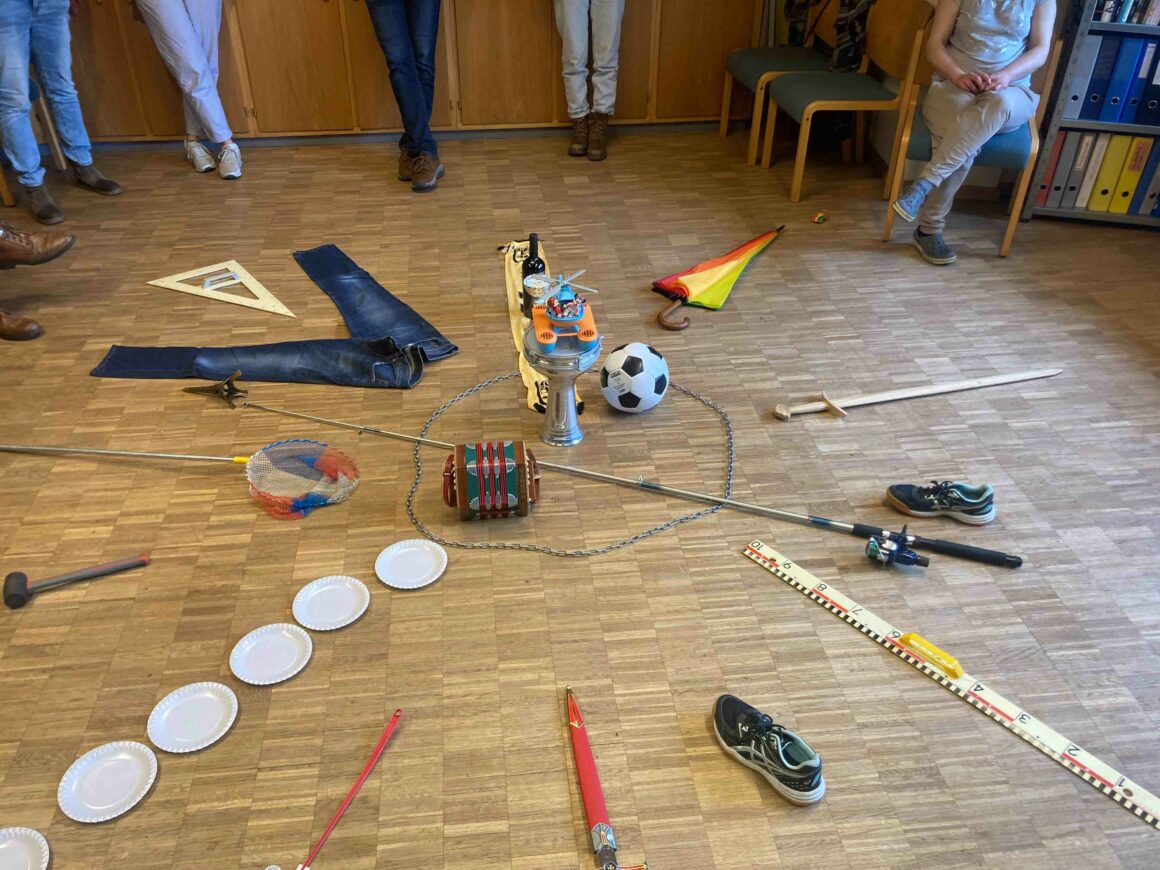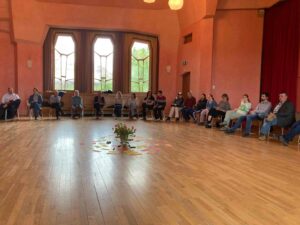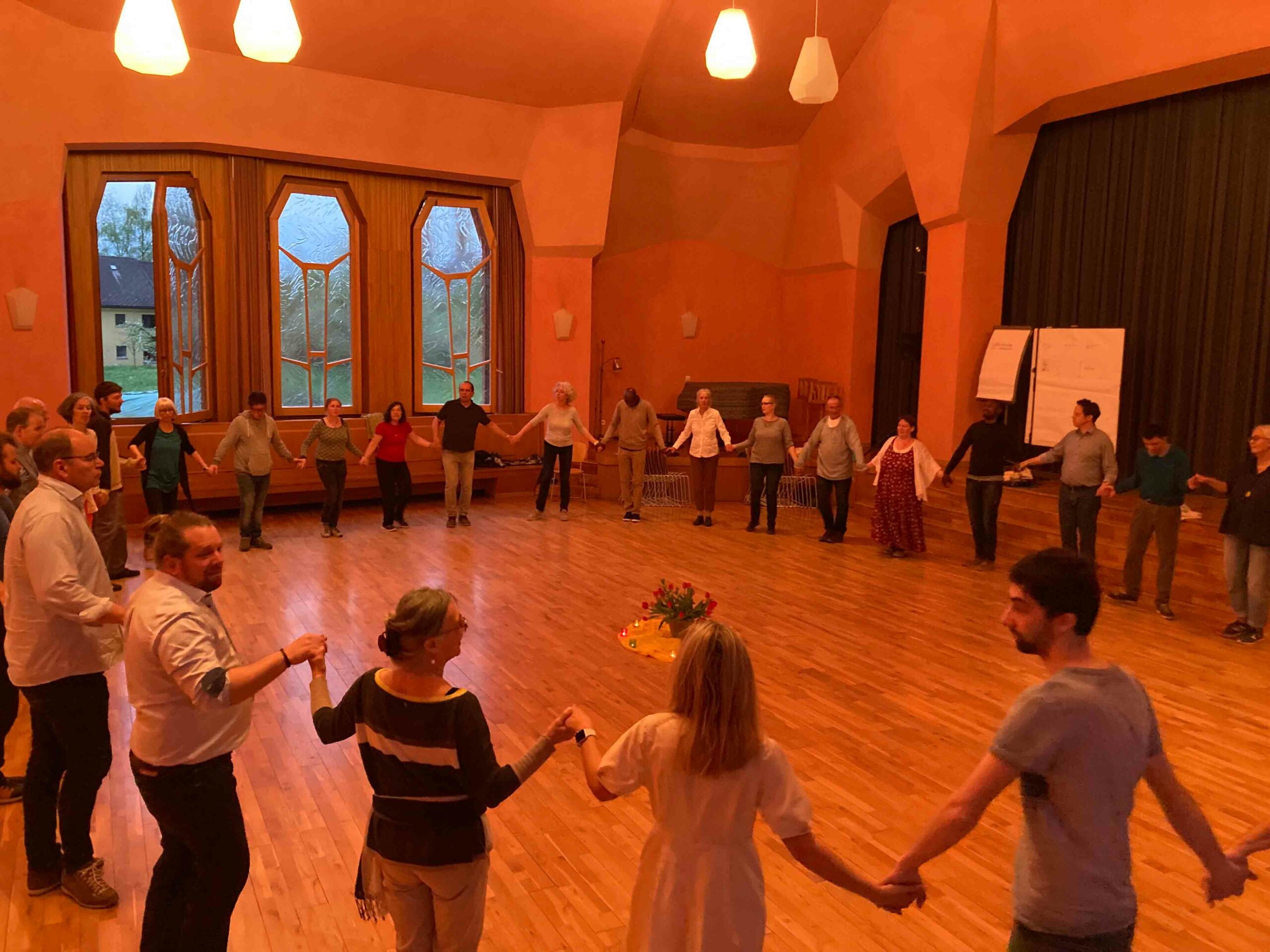How can community develop?
An attempt to share impressions of the inclusive conference “Community in Conversation”
(The conference took place from April 30 to May 2, 2023 at the Humanushaus near Bern/Switzerland.)
WHY?
People have always wanted to live in community because people long to belong – “I am one person among many and I am in the midst of all.”
Community is formed through shared desires and needs.
These can be very small communities, such as: Two people like sailing and go on a sailing vacation together.
And large communities, such as: Working and living together with families, people with assistance needs and friends. This model is lived by many people in anthroposophical communities and Camphill communities.
WHO WAS ATTENDING?
It was the first conference on this topic and could be held at the Humanushaus in Beitenwil/Switzerland thanks to Rainer Menzel, where it was integrated into the 50th anniversary year with its festivities.
It was also favorable that the annual International Training Conference of the Council had taken place in Kassel/Germany before. Therefore, a colorful mix of colleagues came to Beitenwil with its magnificent view on the Alps: Zacharie and Justin from the Ubumwe Community Center in Rwanda, Liia from Kazan/Russia, Martin from Ireland, Henrik from Norway, Libby from the USA and about 30 people from Germany and the Humanushaus in Switzerland.
Thus, it was a particularly inclusive experience, because in addition to different people, different languages had to be dealt with.
HOW DID WE WORK TOGETHER?
At the beginning, since the participants:inside did not know each other, something like a prelude was given: Getting to know each other was already a community experience: Everyone greeted everyone!!!
Then each person named a quality that is valuable for the creation of community beginning with the first letter of his/her name and wrote it on a small card. And then we played “Human Bingo“ – who has what in common with whom?
Game template to download: Deutsch | English
On the topic of “community building,” some research already exists.
A first research view was given to us by Tobias Raedler from the community Altenschlirf/Germany in his contribution: Qualities of community life were explored in encounters, observations and interviews with people from the communities Altenschlirf, Sassen/Richthof and Münzinghof.
More information for download: Deutsch | English
The second view was given by Lea Sprügel out of the cycle of agriculture in the community Lehenhof/Germany. How does the cycle of agricultural food production connect us to food and community life?
More information for download:Deutsch (only available in German)
And the third view was presented by Libby Sanders from Camphill Academy in the USA: What is research and how does an inquiring attitude look like? She let the participants themselves experience an inquiring attitude with three questions:
Why did something interest me?
Why is it important?
Can I answer my question?
Working groups were offered in two slots to deepen what had been heard.
There was a conversation group and three artistic groups about Land Art, Social Sculpture and Contact Improvisation to choose from.
The evening program was wonderful performed by and with the colleagues of the Humanushaus: once folk dancing and on the second evening the jubilee concert with choir, lyre ensemble and orchestra with compositions especially for the jubilee year of the Humanushaus. Many thanks to the people from Humanushaus that these program points could be part of the conference.
WHAT’S NEXT?
An enthusiastic, inclusive preparatory group has been formed, which would like to carry this conference forward as a series of conferences. Thus, the people of the preparatory group will soon meet digitally to plan where the conference “Community in Conversation 02” may take place at the end of April/beginning of May 2024.
The Council newsletter will provide information on this.



















